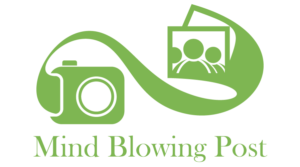Due to the disruption of education through online learning, some difficulties have emerged that affect the ecosystem of the educational process. Since many of the regular face-to-face assessment types do not work in virtual settings, teachers and administrators have had to be creative in evaluating the students’ accomplishments and progress. Explore the concept of how to use new technologies and opportunities as well as creative approaches for assessment that not only reflect the students’ accomplishment and results but also contributes to motivation and effectiveness of learning in the virtual environment.
Utilizing Learning Management Systems for Continuous Assessment:
LMS have become rather unavoidable tools in the hands of the educators who are teaching in virtual spaces. The importance of LMS cannot be overstated given the features that can be offered with regard to constant formative assessments and monitoring of progress. Most of the platforms such as Canvas, Blackboard, and Google Classroom come with the features that help the teacher to create build, distribute graded assignments, quizzes as well as tests. Utilizing a cloud based school management system can also significantly enhance continuous assessment by providing educators with efficient tools to assess and track student progress in remote learning environments. Incorporated in such systems the capacity for multiple choice questions and short answer questions’ automatic marking is quite useful since it would free up the teacher’s time whilst giving students’ results almost instantly.
Implementing Formative Assessment Strategies in Virtual Classrooms:
One of the biggest benefits of using formative assessment in remote learning is that it enables learning in real time, therefore tutors are able to identify learner misconceptions and create an intervention. In virtual classrooms, there are available various tools that may be used by the educators in order to conduct formative assessment properly. Platforms like Kahoot! Quiz, Quizizz, and Socrative allow teachers to build quizzes and polls that students can take simultaneously in live classes. Besides, they are not only used to check the learners’ knowledge but also encourage them with help of the game components.
Leveraging Project-Based Assessments and Digital Portfolios:
While designing formative and summative assessments in remote learning contexts, project assessments and portfolios are often more effective than the paper and pen tests as they give a much richer picture of the students’ knowledge growth and their achievements throughout the learning process. While evaluating the effectiveness of knowledge in practice, long-term projects are suitable to assign by their complexity: as a rule, they imply research activities, critical thinking, and creativity. Such tools as Trello or Microsoft Planner can be easily used to decompose a big project into smaller tasks and track their implementation over certain period of time.
Conducting Virtual One-on-One Assessments and Check-Ins:
Regular one-on-one assessments and check-ins are extremely helpful in remote learning to build inter-individual relationships and get a better understanding of the students’ performance and difficulties. Applications such as Zoom, Google meet, or Microsoft Team can be used to conduct one-on-one assessment meetings in which the teacher can ask questions, monitor how the students solve problems, and in return give instant feedback. The effectiveness of such communication primarily is developed during the working performance and can reach a maximum level during assessing the skills that are rather challenging to predict by means of writing activities.
Employing Data Analytics and Visualization Tools for Progress Tracking:
Another advantage of the modern digital world associated with the conduct of lessons in distance education is the availability of large amounts of data on the activities carried out, which makes it possible to track the progress made in detail. Employing data analytics and visualization tools is essential for tracking student progress effectively, and integrating human resource management software hrms can streamline administrative tasks, allowing educators to focus more on data-driven insights. It is recommended that the educators should use the state-of-art tools to analyze and interpret such data with a view to facilitating students’ learning.
Since remote learning is still a developing process, it is quite evident that there is a need to establish a more complex system of monitoring student achievements. All above mentioned different forms of assessment not only help in defining the achievements of the learners, but also enable the learners to develop key attributes like self-learning, computer literacy, self-regulatory skills etc.

